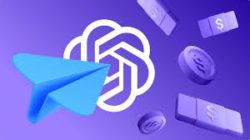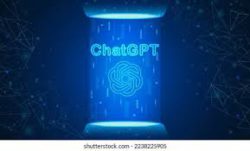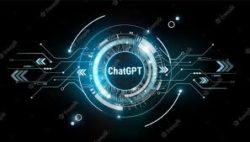Top 10 Ways ChatGPT Is Changing Blockchain
ChatGPT is an advanced language model developed by OpenAI. It belongs to the GPT (Generative Pre-trained Transformer) family of models, specifically based on the GPT-3.5 architecture. ChatGPT is designed to generate human-like responses in a conversational format, making it well-suited for chatbot applications.
The underlying technology behind ChatGPT is deep learning, specifically utilizing a transformer architecture. Transformers are a type of neural network architecture that has revolutionized natural language processing tasks. They excel at capturing long-range dependencies in text and have achieved impressive results in tasks like machine translation, text summarization, and question answering.
The training process of ChatGPT involves pre-training and fine-tuning. During pre-training, the model is exposed to a vast amount of text data from the internet to learn patterns and language structures. GPT-3.5, the architecture on which ChatGPT is based, was trained on a massive dataset containing billions of sentences. This vast exposure to diverse text sources helps the model to learn grammar, facts, reasoning abilities, and even some level of common sense.
After pre-training, the model goes through fine-tuning, where it is trained on more specific data with the help of human reviewers. OpenAI provides guidelines to these reviewers to ensure the model produces appropriate and safe responses. The reviewers review and rate possible model outputs, and the model is trained to generalize from this feedback. This iterative process helps the model improve over time and become more reliable and contextually appropriate in its responses.
The primary objective of ChatGPT is to generate coherent and contextually relevant responses given an input prompt. It takes a series of text inputs and generates a continuation that follows the conversation flow. The model can understand and respond to a wide range of topics and questions, and it can engage in conversations that simulate human-like interaction.
While ChatGPT is powerful and can generate impressive responses, it also has limitations. It can sometimes produce incorrect or nonsensical answers, be sensitive to input phrasing, or provide responses that are overly verbose. The model might also be excessively confident in its responses, even when it’s unsure of the correct answer. Additionally, ChatGPT may not have the ability to retain contextual understanding over long conversations.
OpenAI actively works to address these limitations and continuously improves the model. User feedback is crucial in helping them identify areas for enhancement and potential biases in the responses generated by the model.
Overall, ChatGPT represents a significant advancement in conversational AI and demonstrates the potential of large-scale language models to understand and generate human-like text. It has numerous applications in chatbots, virtual assistants, customer support systems, and other interactive platforms where natural language processing is essential.
Also read: AI-related Crypto Assets Saw Significant Returns Following The Launch Of ChatGPT
Importance of ChatGPT for the Economy
ChatGPT, and similar language models, play an important role in the economy in several ways. Here are some key aspects highlighting the significance of ChatGPT for the economy:
1. Customer Support and Service: ChatGPT can be employed in customer support systems to provide immediate assistance and address customer queries and concerns. It can handle a large volume of customer inquiries simultaneously, reducing the need for human agents and potentially lowering operational costs for businesses. By providing prompt and accurate responses, ChatGPT enhances customer satisfaction, which is crucial for maintaining customer loyalty and driving repeat business.
2. Virtual Assistants: ChatGPT can serve as the foundation for virtual assistants that can perform various tasks, such as scheduling appointments, making reservations, providing recommendations, and more. Virtual assistants powered by ChatGPT can streamline workflows, enhance productivity, and improve the overall user experience. By automating routine tasks, they free up human resources for more complex and value-added activities.
3. Personalized Recommendations: Language models like ChatGPT can analyze user preferences and provide personalized recommendations for products, services, or content. By understanding user behavior, preferences, and context, ChatGPT can offer tailored suggestions that increase user engagement and potentially drive sales. This capability is particularly valuable in e-commerce, media, and entertainment industries, where personalized recommendations can significantly influence consumer choices.
4. Content Creation and Editing: ChatGPT can be utilized for generating content, such as articles, blog posts, social media updates, and more. This can be particularly beneficial for content-intensive businesses that require a constant stream of fresh and engaging content. It can save time and resources for content creators by providing initial drafts or generating ideas for further refinement. Additionally, ChatGPT can also assist in proofreading and editing, helping improve the quality and consistency of written content.
5. Market Research and Data Analysis: ChatGPT can aid in market research and data analysis by extracting insights from large volumes of text-based data. It can help identify trends, sentiments, and patterns in customer feedback, social media posts, reviews, and other textual sources. This information can guide businesses in making data-driven decisions, understanding consumer preferences, and adapting their strategies accordingly.
6. Language Translation and Localization: With its ability to understand and generate text in multiple languages, ChatGPT can facilitate language translation and localization. This is valuable for businesses operating in international markets, as it can enable communication and engagement with customers who speak different languages. By removing language barriers, ChatGPT contributes to global business expansion and facilitates cross-cultural interactions.
7. Education and Training: ChatGPT can assist in educational contexts by providing explanations, answering questions, and supporting learning processes. It can serve as a virtual tutor or mentor, offering personalized guidance and supplemental resources to students. Furthermore, ChatGPT can aid in employee training programs, simulating real-world scenarios and providing interactive learning experiences.
While ChatGPT offers significant potential and benefits, it is important to consider potential challenges and ethical considerations. These include ensuring privacy and data protection, addressing biases in the training data, maintaining transparency and accountability, and understanding the limitations of AI systems. Responsible deployment and ongoing research and development efforts are essential for harnessing the full economic potential of ChatGPT while mitigating associated risks.
Also read: OpenAI Commits $1 Million To Support AI-Driven Cybersecurity Initiatives
How is ChatGPT related to Blockchain
ChatGPT and blockchain technology are two distinct areas of innovation, but there are some potential connections and ways in which they can intersect. Here are a few ways in which ChatGPT could be related to blockchain:
1. Decentralized Chat Applications: Blockchain technology is often associated with decentralization, and it has the potential to support the development of decentralized chat applications. These applications can leverage blockchain to store chat logs, user profiles, and other relevant data in a distributed and tamper-resistant manner. ChatGPT could be integrated into such applications to provide conversational capabilities, allowing users to interact with the chatbot component in a decentralized environment.
2. Privacy and Security: Blockchain technology emphasizes privacy and security through its cryptographic protocols and decentralized architecture. When it comes to chat applications, privacy and security are crucial aspects. ChatGPT could benefit from blockchain by leveraging its secure and decentralized nature to protect user conversations, ensuring that sensitive information remains private and is not accessible to unauthorized parties.
3. Trust and Verification: Blockchain’s key strength lies in its ability to establish trust and enable verifiability in a decentralized network. ChatGPT, as an AI language model, generates responses based on its training data and internal processes. By incorporating blockchain technology, it may be possible to enhance the transparency and trustworthiness of ChatGPT’s responses. For instance, using a blockchain to timestamp and record the interactions between users and the AI model can provide an immutable audit trail, enabling users to verify the authenticity of the generated responses.
4. Token Economy: Some blockchain-based platforms incorporate their native tokens as a means of incentivizing and rewarding participants. With ChatGPT, it could be conceivable to integrate a token economy into chat applications, where users earn or spend tokens for interacting with the AI model or accessing certain features. These tokens could be used to drive engagement, incentivize quality contributions, or enable premium services within the chat ecosystem.
5. Community Governance: Blockchain networks often employ governance mechanisms that allow token holders to participate in decision-making processes. This could be extended to chat applications that utilize ChatGPT, where the community of users has a say in the model’s behavior, policies, and evolution. Decentralized governance models can enable more inclusive and democratic decision-making, ensuring that the chatbot aligns with the preferences and needs of its user community.
While these potential connections exist, it’s important to note that they are more speculative in nature, and the practical implementation and integration of ChatGPT with blockchain technology are still evolving. The exploration of these intersections requires further research, development, and experimentation to assess the feasibility, benefits, and challenges of such integrations.
As with any technology, it’s crucial to consider the ethical implications and address potential concerns regarding privacy, security, transparency, and bias. Responsible development and deployment practices are essential to ensure that the combination of ChatGPT and blockchain technology enhances user experiences while upholding ethical standards and societal values.
Also read: ChatGPT In Blockchain Technology – Will It Work?
Top 10 ways ChatGPT is changing Blockchain
ChatGPT is a large language model (LLM) chatbot developed by OpenAI. It is trained on a massive dataset of text and code, and can generate text, translate languages, write different kinds of creative content, and answer your questions in an informative way.
In recent years, ChatGPT has been increasingly used in the blockchain industry. Here are 10 ways ChatGPT is changing blockchain:
- Smart contract development. ChatGPT can be used to generate smart contract code, saving developers time and reducing the likelihood of errors. It can also produce natural language explanations of the contract’s logic and features, as well as samples of its potential applications in different contexts.
- Code documentation. ChatGPT can be used to generate thorough documentation for smart contract programming. This documentation can include explanations of the code’s variables, classes, and functions, as well as usage examples. This can save developers time and help them to better understand the code.
- Community management. ChatGPT can be used to manage and interact with a blockchain project’s community. It can automate replies to customer support tickets, answer frequently asked questions, and engage in discussions on social media. This can help to improve the customer experience and build a stronger community around the project.
- Wallet development. ChatGPT can be used to generate code for blockchain wallets. This code can be used to store, send, and receive cryptocurrencies. ChatGPT can also be used to generate user-friendly interfaces for wallets, making them easier to use for beginners.
- Simulation. ChatGPT can be used to simulate the behavior of blockchain networks. This can be used to test new features, identify potential security vulnerabilities, and optimize performance. ChatGPT can also be used to generate realistic data sets for training machine learning models.
- Sentiment analysis. ChatGPT can be used to analyze the sentiment of social media posts and news articles about blockchain. This can help to identify trends in public opinion and to track the progress of blockchain adoption.
- Forecasting. ChatGPT can be used to forecast the future price of cryptocurrencies. This can help investors to make informed decisions about their investments.

- Compliance. ChatGPT can be used to help blockchain companies to comply with regulations. It can generate reports that track compliance with industry standards, and it can identify potential risks and vulnerabilities.
- Research. ChatGPT can be used to conduct research on blockchain technology. It can access and process large amounts of data, and it can generate hypotheses and insights.
- Education. ChatGPT can be used to educate people about blockchain technology. It can generate interactive tutorials, answer questions, and provide resources for further learning.
These are just a few of the ways ChatGPT is changing blockchain. As the technology continues to develop, we can expect to see even more innovative ways to use ChatGPT in the blockchain industry.
I didn’t see anyone talking about it but @AlchemyPlatform just released a tool.
The tool will allow anyone to simply ask chatGPT any info about the blockchain.
Ex:
Give me every NFT transaction of X address for the past 2 weeks.
This is important to simplify Web3. pic.twitter.com/NuzRCbgNPi
— Zak³⚱️ (@ZakaiMill) June 19, 2023
Risks associated with ChatGPT changing Blockchain
While there are potential benefits in combining ChatGPT with blockchain technology, it’s important to consider the risks and challenges associated with such integration. Here are some key risks to be mindful of:
1. Security Vulnerabilities: Blockchain technology itself is considered secure due to its decentralized nature and cryptographic protocols. However, integrating ChatGPT with blockchain introduces new attack vectors and potential security vulnerabilities. Malicious actors could exploit weaknesses in the chat application or the AI model itself to manipulate or tamper with the blockchain data, compromising the integrity and confidentiality of user interactions.
2. Privacy Concerns: ChatGPT may have access to sensitive user data during conversations. Integrating it with blockchain raises concerns about the privacy of these conversations. While blockchain provides tamper-resistant storage, it also implies that user interactions could be permanently recorded on the blockchain, making it challenging to ensure user privacy and control over their personal information. Careful consideration must be given to implement privacy-enhancing techniques such as data anonymization or encryption.
3. Scalability and Performance: Blockchain technology, particularly public blockchains, often face scalability and performance limitations. The computational demands of running ChatGPT and storing large amounts of conversational data on-chain could strain the blockchain network, leading to slower transaction processing times and increased costs. Ensuring efficient and scalable storage and retrieval of chat data within the blockchain ecosystem is a significant technical challenge.
4. Bias and Fairness: Language models like ChatGPT have been known to exhibit biases present in their training data. Integrating ChatGPT with blockchain introduces the risk of perpetuating biases within the decentralized ecosystem. If not carefully addressed, biased responses generated by ChatGPT could be recorded on the blockchain and propagate through the system, potentially leading to unfair or discriminatory outcomes in the chat application.
5. Governance Challenges: Combining ChatGPT with blockchain introduces governance complexities. Blockchain networks typically rely on consensus mechanisms and community governance to make decisions. Determining who has the authority to modify or upgrade the AI model, establish guidelines for chatbot behavior, or resolve disputes within the chat application ecosystem can be challenging. Developing effective governance models that strike a balance between transparency, user participation, and avoiding undue concentration of power is crucial.
6. Regulatory and Compliance Considerations: Blockchain technology and AI models like ChatGPT may be subject to different regulatory frameworks. Integrating the two could introduce additional regulatory complexities. Compliance with data protection, intellectual property, consumer protection, and other relevant regulations becomes more intricate when dealing with decentralized systems and AI-powered chat applications. Adhering to legal requirements and ensuring ethical practices throughout the integration process is paramount.
Addressing these risks requires careful design, rigorous testing, and ongoing monitoring. Thorough security audits, privacy impact assessments, and vulnerability testing should be conducted to identify and mitigate potential vulnerabilities and risks. Additionally, transparent communication with users about data handling, privacy measures, and potential limitations is essential to establish trust and manage expectations.
It’s worth noting that the risks associated with combining ChatGPT and blockchain are not inherent limitations of either technology but rather arise from their integration. Diligent attention to security, privacy, fairness, governance, and compliance can help mitigate these risks and create a robust and trustworthy chat application that leverages the benefits of both ChatGPT and blockchain technology.
Future of chatgpt and Blockchain
The future of ChatGPT and blockchain holds significant potential for transformative advancements in various domains. While the specific trajectory of their integration is uncertain, here are some potential directions and developments:
1. Enhanced Privacy and Security: Blockchain’s decentralized and tamper-resistant nature can contribute to strengthening privacy and security in chat applications powered by ChatGPT. Integrating blockchain can provide users with greater control over their data, allowing them to selectively share information and protect sensitive conversations. Smart contract implementations can enable end-to-end encryption and facilitate secure interactions, mitigating risks associated with data breaches and unauthorized access.
2. Decentralized Autonomous Chat Agents: The combination of ChatGPT and blockchain could pave the way for the development of decentralized autonomous chat agents. These agents could leverage blockchain’s consensus mechanisms and smart contracts to operate independently, making decisions and providing services without the need for centralized control. Such agents could facilitate peer-to-peer interactions, enabling direct communication and eliminating intermediaries.
3. Community Governance and Consensus: Blockchain’s governance mechanisms can enable community participation in the decision-making processes related to the behavior and evolution of ChatGPT. Token-based voting systems can empower users to collectively determine guidelines, rules, and improvements for the chat application ecosystem. This can enhance transparency, fairness, and inclusivity in shaping the future development and deployment of ChatGPT.
4. Interoperability and Integration: As blockchain technology evolves, interoperability frameworks may emerge, allowing different blockchain networks and chat applications to seamlessly communicate and share information. This could enable cross-platform chat interactions and data exchange between different instances of ChatGPT integrated with various blockchains. The integration of oracles, which provide external data to blockchain systems, could facilitate real-time data feeds for ChatGPT, enhancing its responsiveness and accuracy.
5. Decentralized Marketplace for Chat Services: Blockchain technology can enable the creation of decentralized marketplaces where users can access and exchange chat services powered by ChatGPT. Through the use of smart contracts and blockchain-based payments, users can easily discover and engage with different chat agents, potentially offering specialized expertise or catering to specific industries. This decentralized marketplace could foster innovation and competition, leading to diverse and tailored chat services.
6. Trustworthy and Transparent AI: By leveraging blockchain’s immutability, a record of interactions between ChatGPT and users can be stored on the blockchain, enabling transparent auditing and accountability. This can help address concerns related to bias, ethical issues, and the quality of generated responses. Users and auditors can verify the integrity and fairness of the AI model’s behavior by examining the recorded interactions on the blockchain.
7. Integration with Web3.0 Applications: Web3.0, often associated with blockchain and decentralized technologies, envisions a more user-centric and open internet. ChatGPT could play a role in Web3.0 applications by providing conversational interfaces for decentralized finance (DeFi) protocols, decentralized social media platforms, and decentralized marketplaces. ChatGPT’s natural language processing capabilities can enhance user experiences and foster greater accessibility to decentralized applications.
It’s important to note that the future of ChatGPT and blockchain integration is subject to ongoing research, development, and regulatory considerations. Ethical implications, data privacy, governance models, scalability, and interoperability challenges will need to be addressed for successful integration. Collaboration between AI researchers, blockchain developers, policymakers, and other stakeholders will be vital in shaping a responsible and impactful future for this fusion of technologies.
Stay informed with daily updates from Blockchain Magazine on Google News. Click here to follow us and mark as favorite: [Blockchain Magazine on Google News].
Get Blockchain Insights In Inbox
Stay ahead of the curve with expert analysis and market updates.
latest from tech
Disclaimer: Any post shared by a third-party agency are sponsored and Blockchain Magazine has no views on any such posts. The views and opinions expressed in this post are those of the clients and do not necessarily reflect the official policy or position of Blockchain Magazine. The information provided in this post is for informational purposes only and should not be considered as financial, investment, or professional advice. Blockchain Magazine does not endorse or promote any specific products, services, or companies mentioned in this posts. Readers are encouraged to conduct their own research and consult with a qualified professional before making any financial decisions. The featured image used is just a creative depiction of the title and it does not intend to hurt sentiments of any person or institution. If it hurts anyone sentiments, please do not hesitate to reach out to Blockchain Magazine.

 Bitcoin
Bitcoin  Ethereum
Ethereum  XRP
XRP  Tether
Tether  Solana
Solana  USDC
USDC  Dogecoin
Dogecoin  Cardano
Cardano  Lido Staked Ether
Lido Staked Ether  TRON
TRON  Chainlink
Chainlink  Wrapped Bitcoin
Wrapped Bitcoin  Wrapped stETH
Wrapped stETH  Avalanche
Avalanche  Sui
Sui  Stellar
Stellar  Hedera
Hedera  Toncoin
Toncoin  Shiba Inu
Shiba Inu  LEO Token
LEO Token  Hyperliquid
Hyperliquid  Litecoin
Litecoin  Bitget Token
Bitget Token  WETH
WETH  Polkadot
Polkadot  USDS
USDS  Bitcoin Cash
Bitcoin Cash  Ethena USDe
Ethena USDe  Wrapped eETH
Wrapped eETH  Uniswap
Uniswap  MANTRA
MANTRA  Ondo
Ondo  Pepe
Pepe  Aave
Aave  Monero
Monero  NEAR Protocol
NEAR Protocol  WhiteBIT Coin
WhiteBIT Coin  Mantle
Mantle  Official Trump
Official Trump  Aptos
Aptos  Internet Computer
Internet Computer  Dai
Dai  Ethereum Classic
Ethereum Classic  Bittensor
Bittensor  Cronos
Cronos  OKB
OKB  POL (ex-MATIC)
POL (ex-MATIC)  Gate
Gate 








